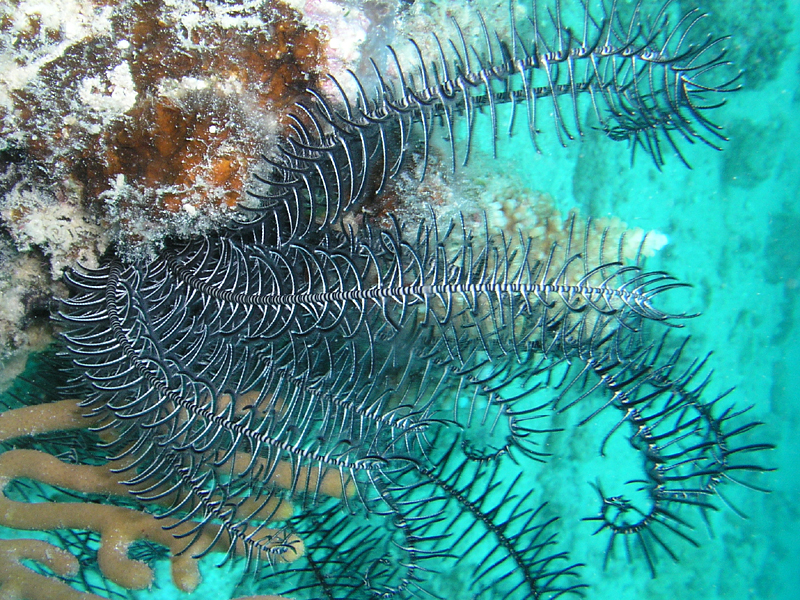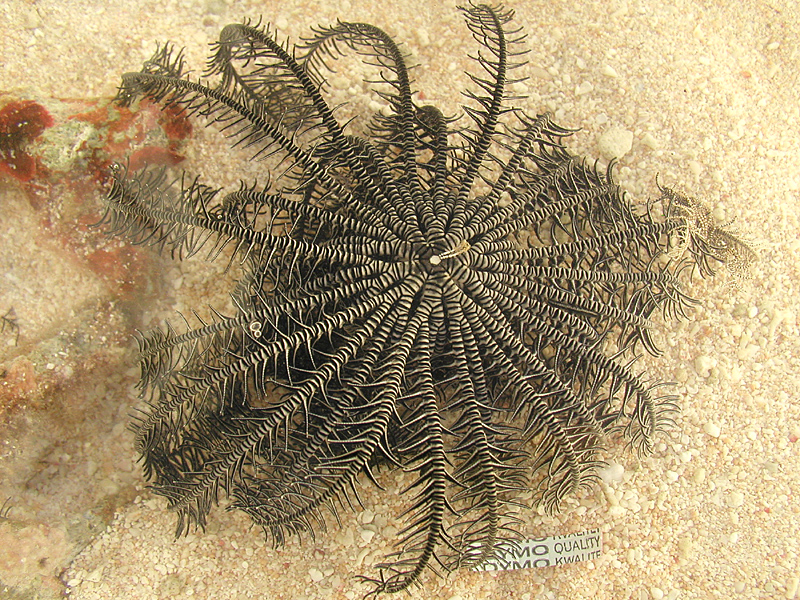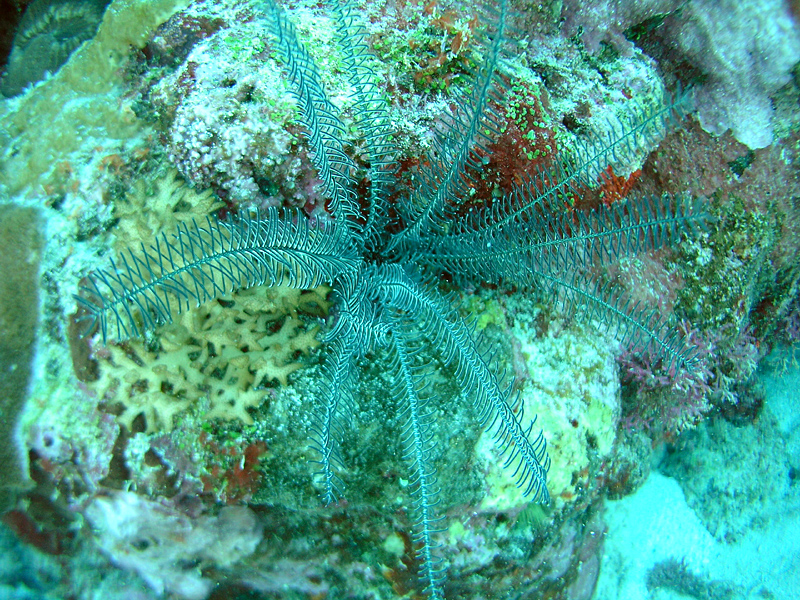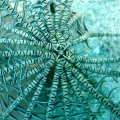
©Lyle Vail and Anne Hoggett: Comanthus suavia arms protruding from a crevice. The black and white colour pattern is consistent.

©Lyle Vail and Anne Hoggett: Pan shot of the underside of Comanthus suavia. The colour pattern and paucity of cirri is distinctive.
Distinguishing features
Comasterids are distinguised from all other featherstar families by having terminal segments of the oral pinnules modified to form a comb. Comasterids a also have a distinctive "feel" due to well developed hooks on most pinnules that cause them to cling like velcro.
Comanthus suavia adults have 20 to 40 slender arms which are usually longer on one side of the animal than the other. Juveniles may have several cirri but cirri are absent in adults.
Colour pattern is distinctive across the size range: white brachials with dark articulations, although the white parts may have a pale bluish or greenish case.
This species is similar to Comanthus parvicirrus. The two can be distinguished in the field on the basis of colour pattern but only if the animal can be extracted from its crevice (Note: a permit it required!). C. gisleni is either uniformly dark or with a dark midline on the proximal brachials on the underside whereas C. parvicirrus has either brown brachials with darker articulations and grey/blue cirri or it is dark green.
Size
- Size data has not been obtained.
Depth range
- Depth range data is not yet available.
Synonyms
Distribution
Distribution and habitat preferences
Comanthus suavia is usually found with a few arms protruding from a crevice, similar to the living positions of Comanthus parvicirrus and Comanthus gisleni.
Comanthus suavia is very common throughout the Lizard Island Group, in the lagoon, on reef slopes and in the rubble zone at the base of the reef.
Web resources
References
- Rowe, F.W.E., A.K. Hoggett, R.A. Birtles and L.L. Vail (1986). Revision of some comasterid general from Australia (Echinodermata: Crinoidea), with descriptions of two new genera and nine new species, Zoological Journal of the Linnean Society, 86: 197-277. LIRS catalog number 198.


